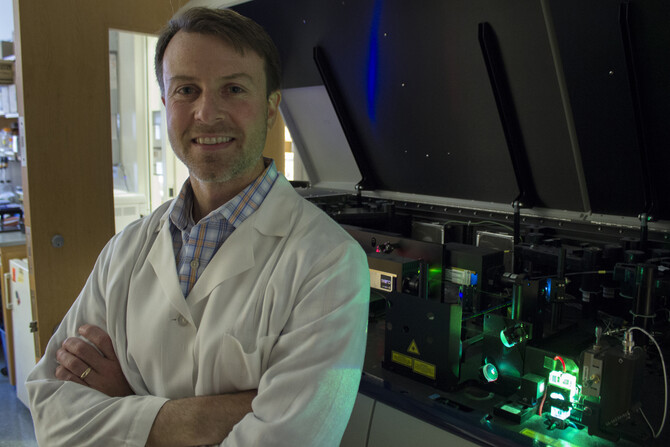Penn Immunologist to Co-direct $12 Million Grant to Study Hepatitis
John Wherry, PhD, an associate professor of Microbiology in the Perelman School of Medicine at the University of Pennsylvania, and colleagues from Massachusetts General Hospital (MGH) are co-directing a $12 million grant to study immune responses in people who have been effectively cured of hepatitis C viral infection with new, high-potency antiviral drugs. This grant is part of the Cooperative Centers for Human Immunology program, administered by the National Institute of Allergy and Infectious Diseases.
"This is a unique medical opportunity to understand how immunity recovers after complete cure of a long-established chronic viral infection," says Wherry, who is also director of the Institute for Immunology at Penn.
Hepatitis C virus (HCV) infects 185 million people worldwide and is the leading need for liver transplantation. In the United States, HCV has a higher mortality rate than HIV. The annual healthcare costs associated with HCV exceed $9 billion, a number expected to increase as the epidemic matures and end-stage liver disease peaks over the next decade, says Wherry.
Because HCV is so persistent, it is a good model for studying chronic viral infection. Researchers think this persistence is because HCV, while inducing interferon expression, maintains its foothold in the body by globally suppressing the host’s two main types of immune response. Interferons are host proteins released in the presence of viruses, bacteria, parasites, and tumor cells that allow immune cells to communicate with each other to fight infection.
The mainstay of HCV treatment for the last two decades -- interferon-based drugs-- is ineffective in many patient subgroups and has significant side effects. The recent development of highly effective, direct-acting antivirals (DAA) against HCV promises to alter HCV treatment by offering a cure without interferon drugs. "However, it remains essential that we understand what type of immunity remains after this pharmacological eradication of HCV," says Wherry. Many HCV-infected people remain at risk for reinfection due to lifestyle and the DAAs are only partially effective in some patient subgroups, particularly those with past treatment with interferon drugs.
However, only patients with advanced disease typically receive DAAs, because current costs are very high for this new drug. The DAAs work in the majority of HCV patients receiving them, but a subset of them, about 10 to 40 percent, rebound with HCV after DAAs are stopped.
The investigators are working on the premise that a DAAmediated cure of chronic HCV infection will lead to partial resetting of some immune abnormalities, such as the restoration of functional T cell memory to the virus and improved responsiveness to the body’s own interferon. However, specific immunological defects may persist in some people who develop optimal immunity to HCV. Such results might suggest the need for HCV vaccination with, or following, DAA therapy, a topic the team is examining, notes Wherry.
The research being performed at Penn on this grant will focus on restoration of functional T cell memory and the epigenetic and transcriptional program of “exhausted” or dysfunctional T cells following HCV cure.








